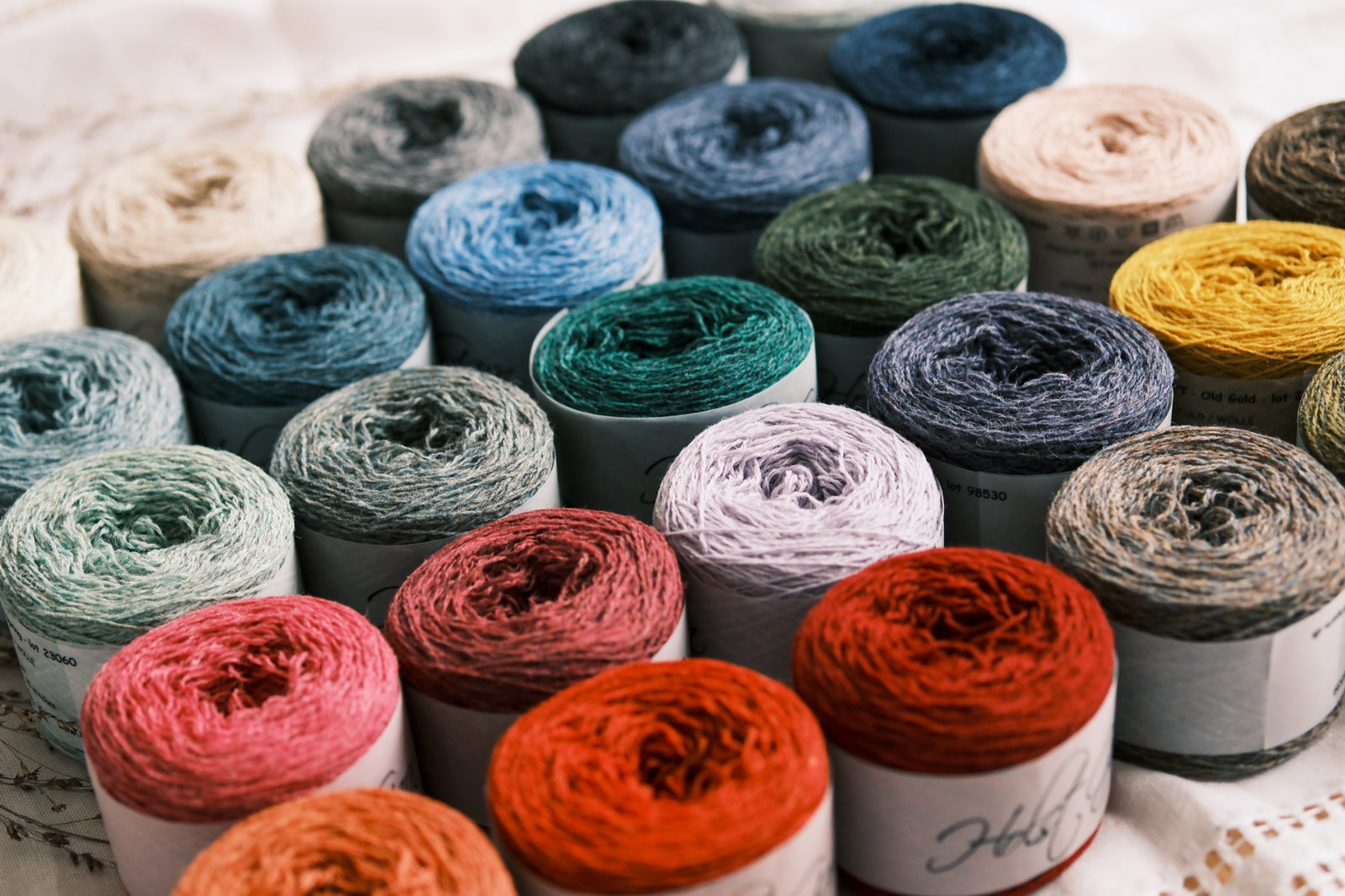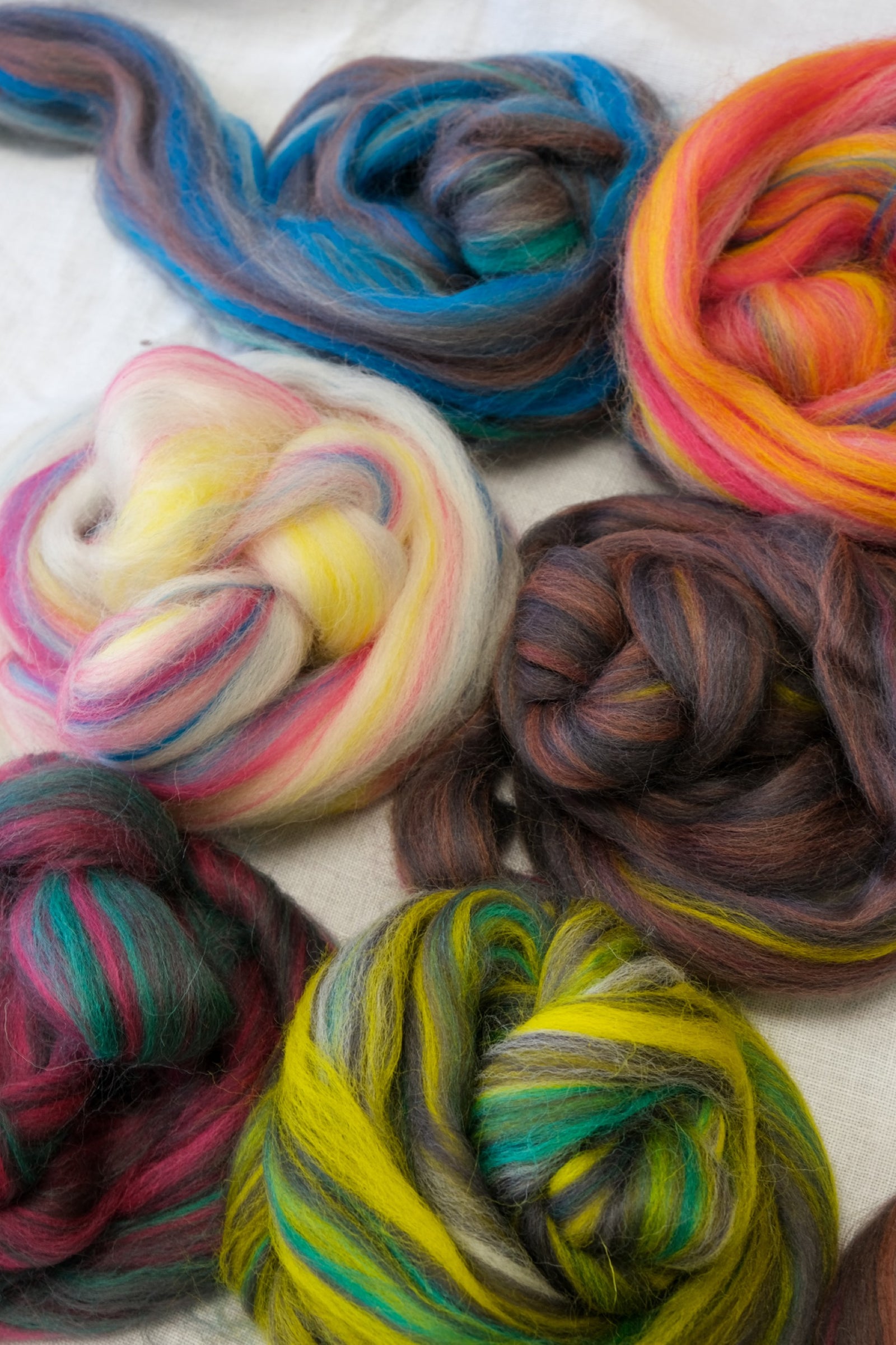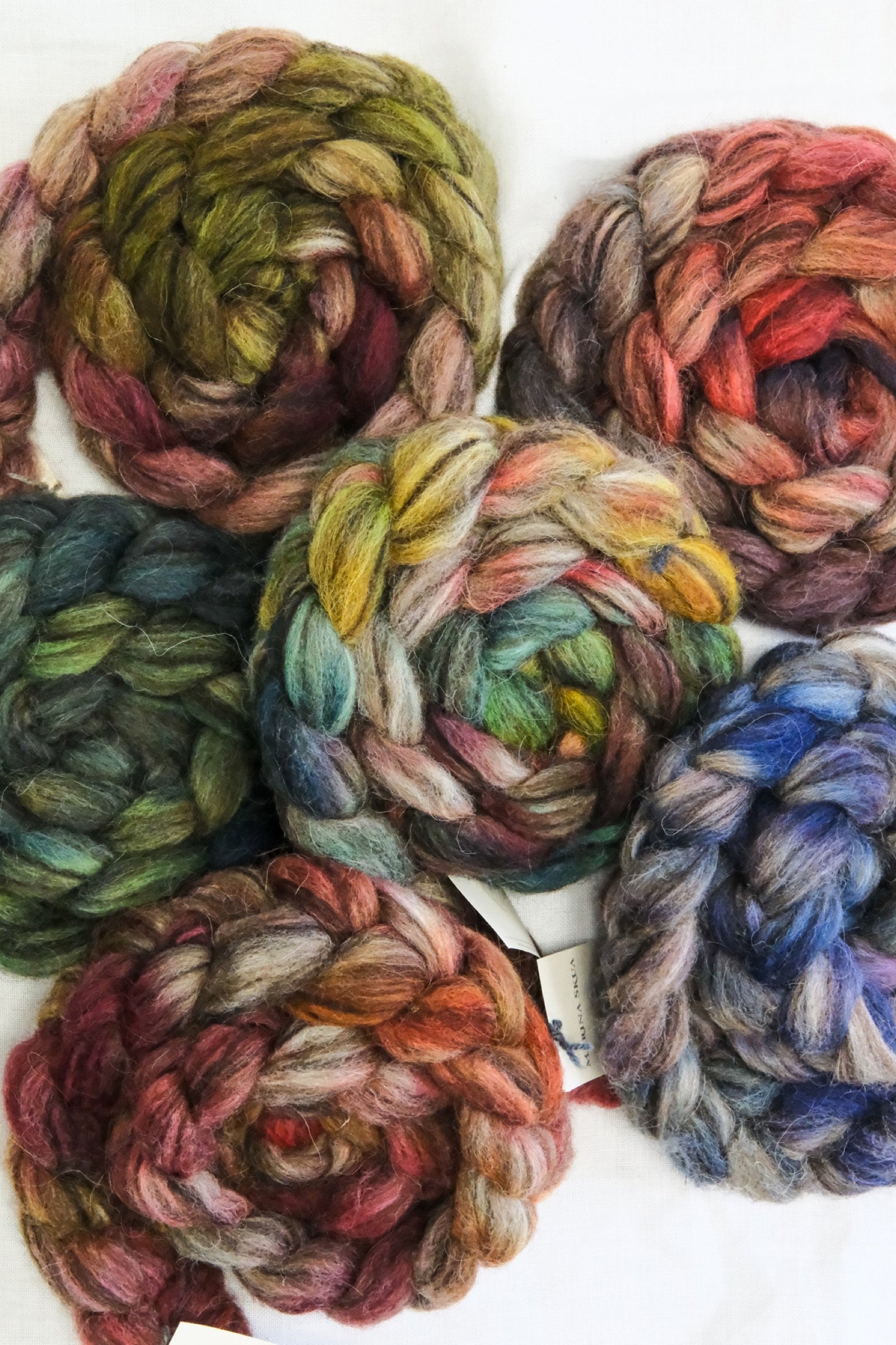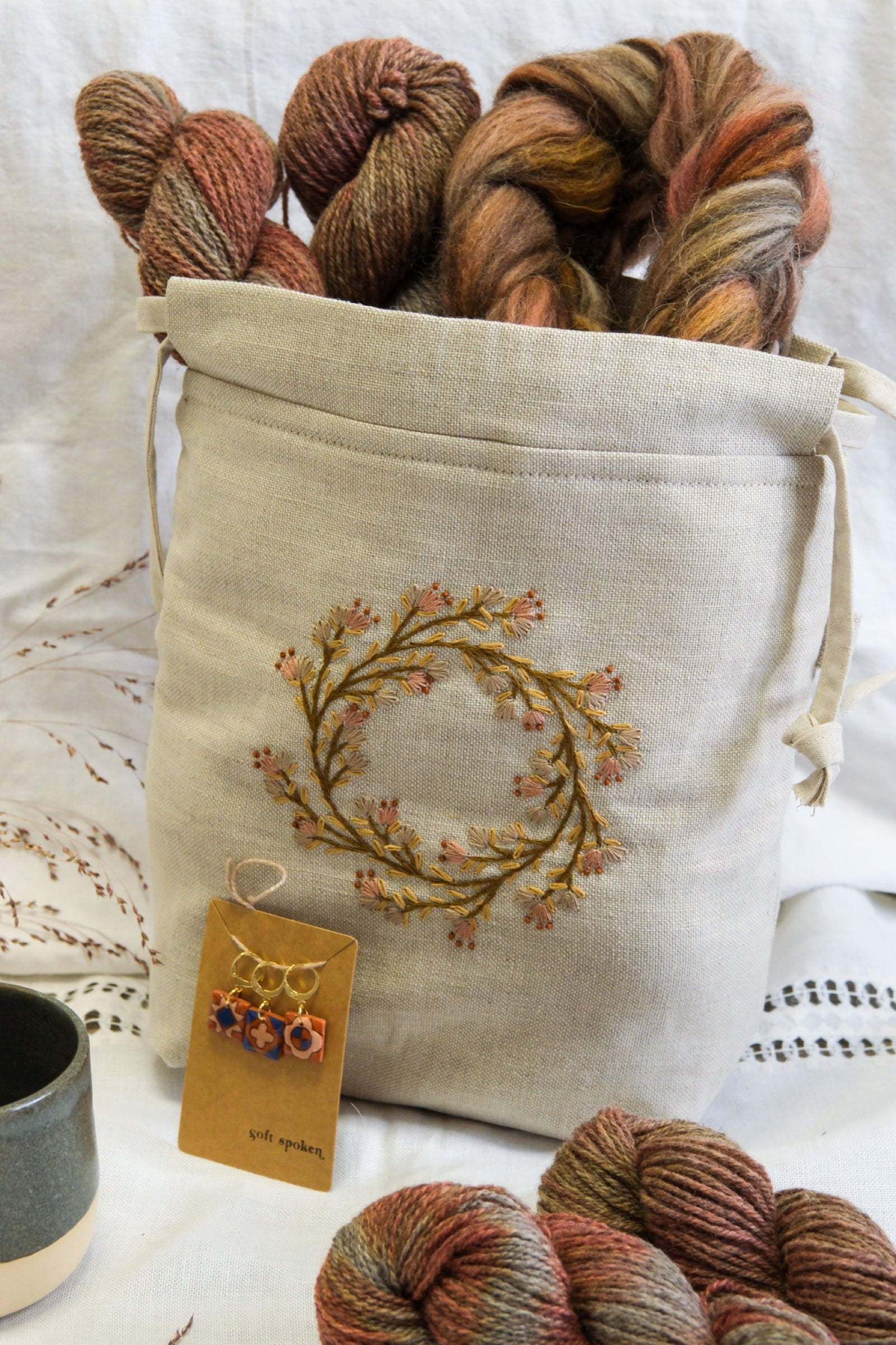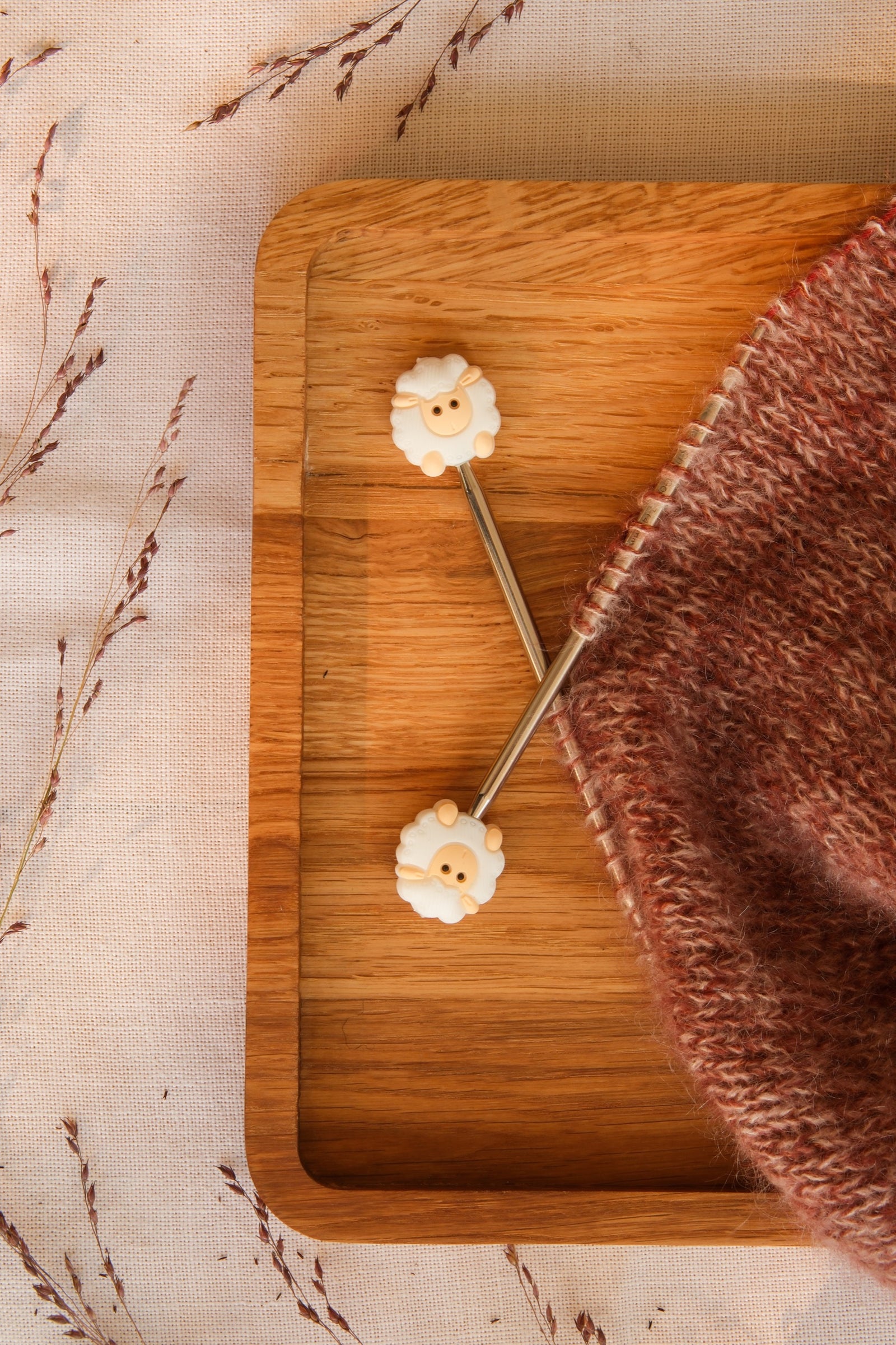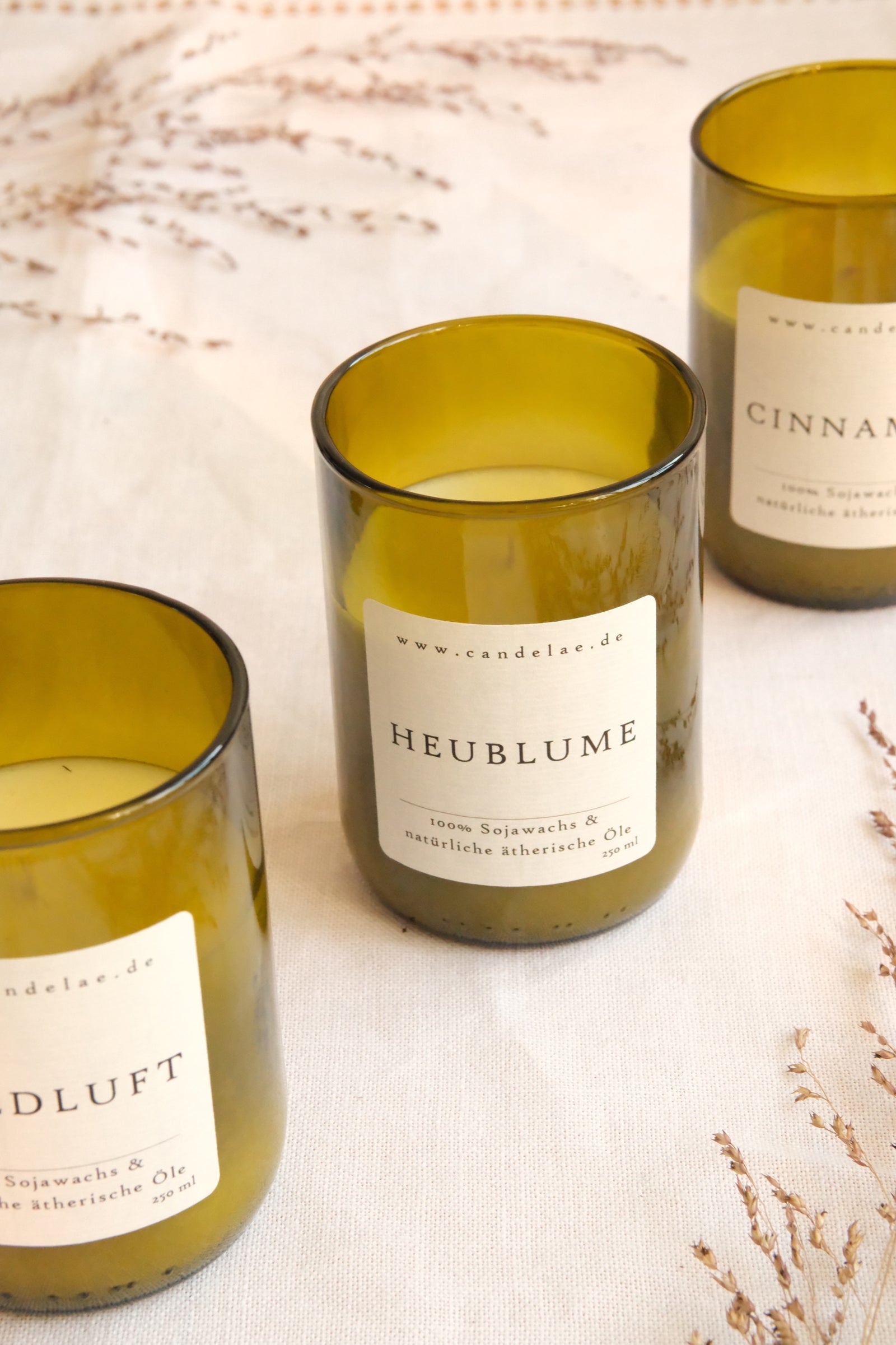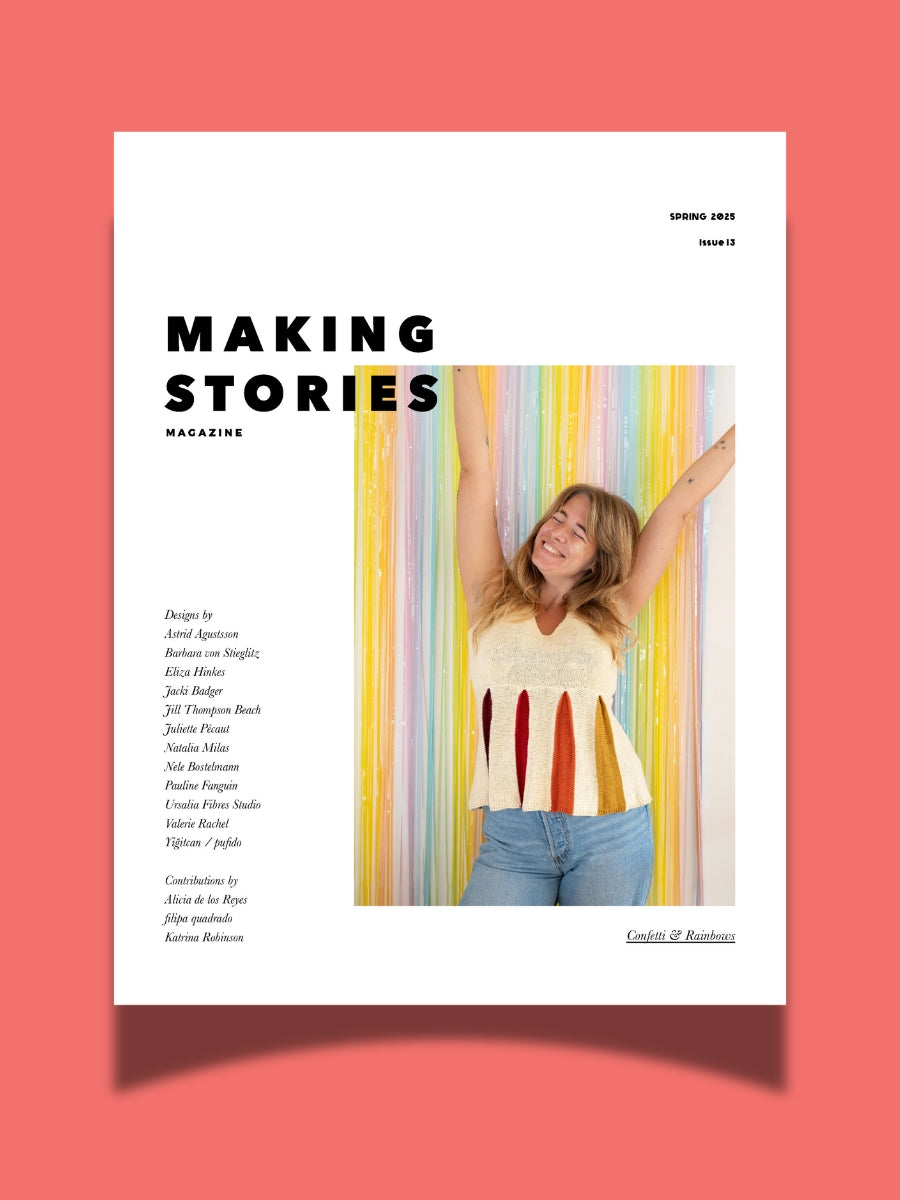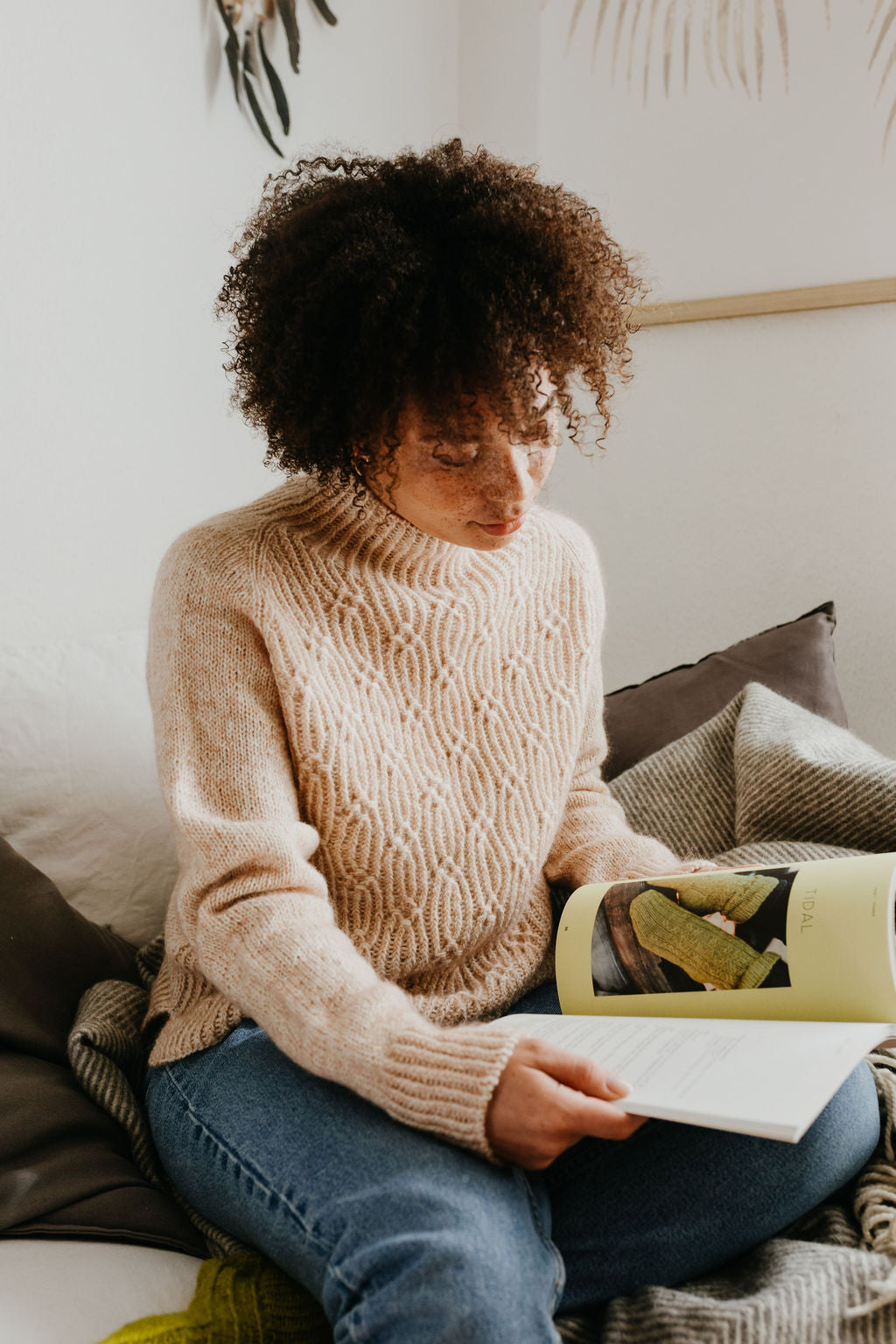As of April 1, Making Stories is closed. Thank you for your support all these years!
As of April 1, Making Stories is closed. Thank you for your support all these years!
Spinning Fiber
Notions & Gifts
Books, Magazines & Patterns
About Us
We're here to help you stitch sustainability into every aspect of your making.
With our carefully curated selection of non-superwash, plastic-free yarns and notions, we have everything you need to get started on your next project - and the one after that.
Here's to a wardrobe of knits we love and want to wear for years to come!
We're here to help you stitch sustainability into every aspect of your making.
With our carefully curated selection of non-superwash, plastic-free yarns and notions, we have everything you need to get started on your next project - and the one after that.
Here's to a wardrobe of knits we love and want to wear for years to come!

Our Sustainability Pledge

Our Blog
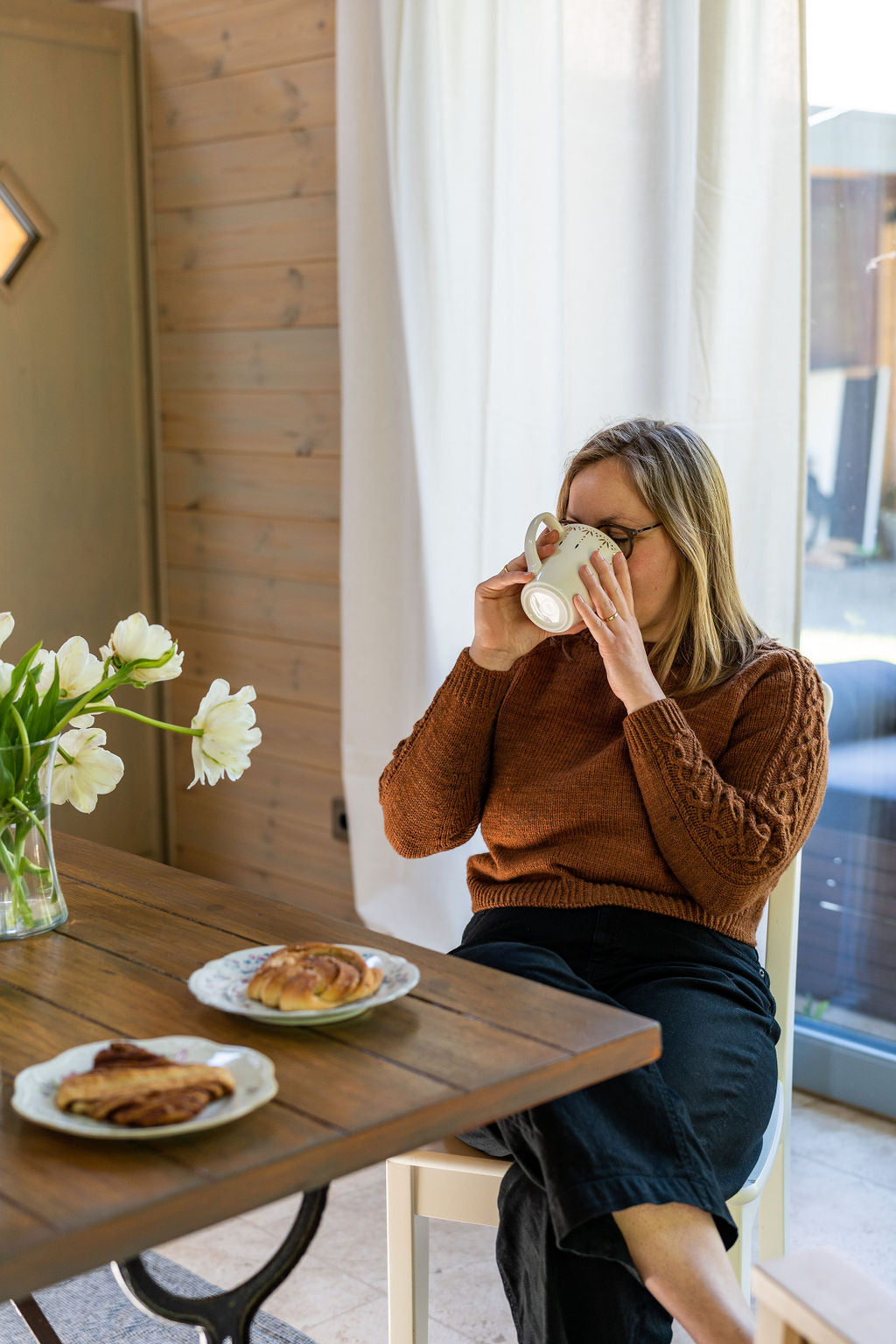
Our Podcast

The Making Stories Collective
Our Love For Natural Sock Yarn (And How To Care For It)
July 07, 2019 3 min read
With the launch of the Making Stories Summer Sock KAL, it's safe to say we have socks on our brains as well as our feet. We nearly always have at least one sock pattern in each of our publications, and a gorgeously natural sock yarn always accompanies them. Though we have often mentioned the natural sock yarns we use on social media and included articles in our work, we haven't talked about it much here on the blog, so I thought I would write a little today about just why we love them.
When it comes to choosing a sock yarn, it's become the norm for knitters to reach for a superwash blend with nylon added for strength, and I can see why. Firstly, the convenience of being able to pop your socks in the washing machine is a huge bonus, and secondly, you've put all the time and effort into knitting your new socks, you want to make sure you won't find holes in then after only a few wears. It makes sense! And if that is your favourite yarn for sock knitting, I'm not going to tell you your wrong, because, at the end of the day, you do you! For us, however, some definite drawbacks come with the convenience of superwash yarn.
As you know, we are passionate about living and working as sustainably as possible, and a lot of the processes that are involved during creating superwash yarns are incredibly toxic for the environment. If you are interested in reading further on this topic, Ashley from Woolful has a fantastic post on this. There are also huge benefits to using natural fibres for your feet, and I'm going to share them with you here, along with a few tips on how to get a pair of hardwearing socks, naturally!
How to knit socks that last…
There are lots of factors that go into having a pair of socks that will stand the test of time:
Fibre:
Socks have traditionally been knit out of wool, and there's a good reason for that. Hardwearing, temperature regulating, and moisture-wicking, it's no wonder it has always been the fibre of choice for socks. It's also very elastic, which is so essential for both a comfortable fit and for retaining shape after wearing. To create a stronger sock yarn, we are now seeing spinners and yarn companies adding natural alternatives to nylon to strengthen such as mohair and silk.
Twist:
You will often hear people talking about how much twist a yarn will have. This simply refers to how tightly a yarn is spun, and it can affect the strength of a thread; the tighter the spin, the stronger the yarn
Gauge:
There's a reason sock needles are always so tiny. A tighter gauge will give you longer-lasting socks as there is less room for the stitches to move around. A looser gauge leads to the stitches rubbing against each other, causing friction and wear.
Stitch pattern:
The pattern you choose for your socks can have a significant impact on how long your socks last, particularly in the areas that take a lot of wear. There's a reason you never see fun lace details on heel flaps, they wouldn't last a week! Often you will see designers add slipped stitches to 'high-traffic' areas such as these to create a more durable fabric. They also look pretty nice too.
Caring For Wool Socks
Washing:
Hand washing your knitted socks is obviously not as easy as throwing them in the washing machine, but it is easy and really not terribly time-consuming. By investing in a good wool wash such as Euclan or Soak, all you need to do is give them a good soak, gently squeezing out any air bubbles and making sure they are completely submerged. Leave them for about an hour and lay flat to dry. The most important things to remember are to never have your water too hot and don't agitate your knitting, this will lead to felting, and never wring out your hand knits, or you'll be left with a misshapen sock. Roll them in a towel to take out any excess water.
Mending:
You've made socks that you love, and you never want to wear anything else! It doesn't matter that you've picked a durable wool yarn with a high twist and knit to a tight gauge with slipped stitches at the heel (phew!). At some point, you're going to discover some wear and tear. At one time, sock darning was not only a way of life but a necessity, which has, unfortunately, gone out of style. It's the perfect way to breathe new life into a well-loved item, and for some, it doesn't stop there. Check out this post by Tom of Holland, who is making visible-mending into a work of art!
What is your favourite sock yarn? Share in the comments below!
Leave a comment
Comments will be approved before showing up.
Also in Blog

Issue 13 – Confetti & Rainbows | Official Pattern Preview
February 12, 2025 13 min read
Hi lovelies! The sun is out here in Berlin, and what better day to talk about one of the most joyful issues we've ever done than a brilliant sunny winter day – meet Issue 13, Confetti & Rainbows!
In Issue 13 – our Spring 2025 Issue – we want to play! Confetti and rainbows, unusually and unconventionally interpreted in 12 new knitwear designs – a journey through color, shapes, texture and materials.
Confetti made out of dried flowers, collected over months from bouquets and the road side. Sparkly rainbows, light reflecting. Gentle textures and shapes, echoing the different forms confetti can take. An unexpected rainbow around the corner, on a brick wall, painted in broad strokes.
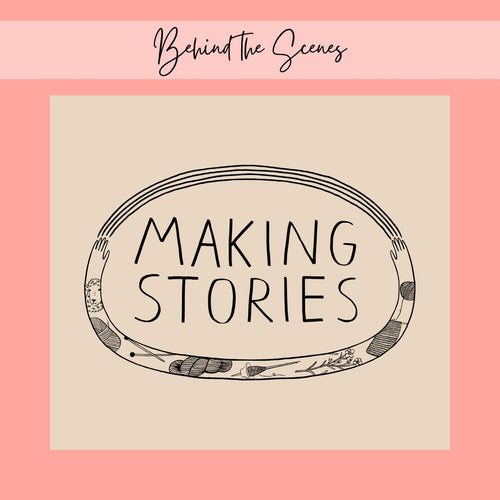
New Look, Same Heart: The Story Behind Our Delightful Rebrand
January 16, 2025 4 min read 1 Comment
Hi lovelies! I am back today with a wonderful behind-the-scenes interview with Caroline Frett, a super talented illustrator from Berlin, who is the heart and and hands behind the new look we've been sporting for a little while.
Caro also has a shop for her delightfully cheeky and (sometimes brutally) honest T-Shirts, postcards, and mugs. (I am particularly fond of this T-Shirt and this postcard!)
I am so excited Caro agreed to an interview to share her thoughts and work process, and what she especially loves about our rebrand!

Thoughts on closing down a knitting magazine
November 19, 2024 12 min read 1 Comment
Who Is Making Stories?
We're a delightfully tiny team dedicated to all things sustainability in knitting. With our online shop filled with responsibly produced yarns, notions and patterns we're here to help you create a wardrobe filled with knits you'll love and wear for years to come.
Are you part of the flock yet?
Sign up to our weekly newsletter to get the latest yarn news and pattern inspiration!


